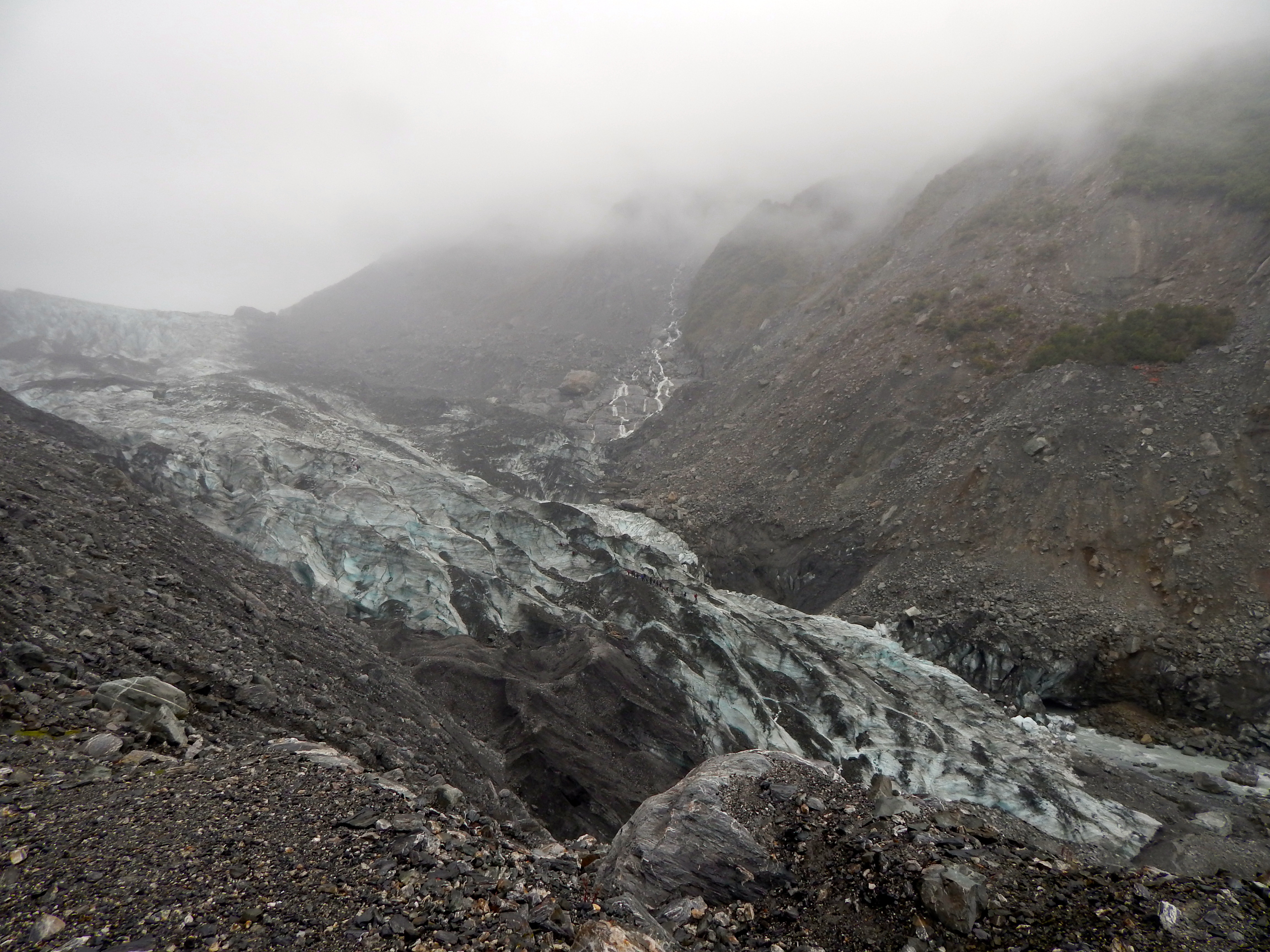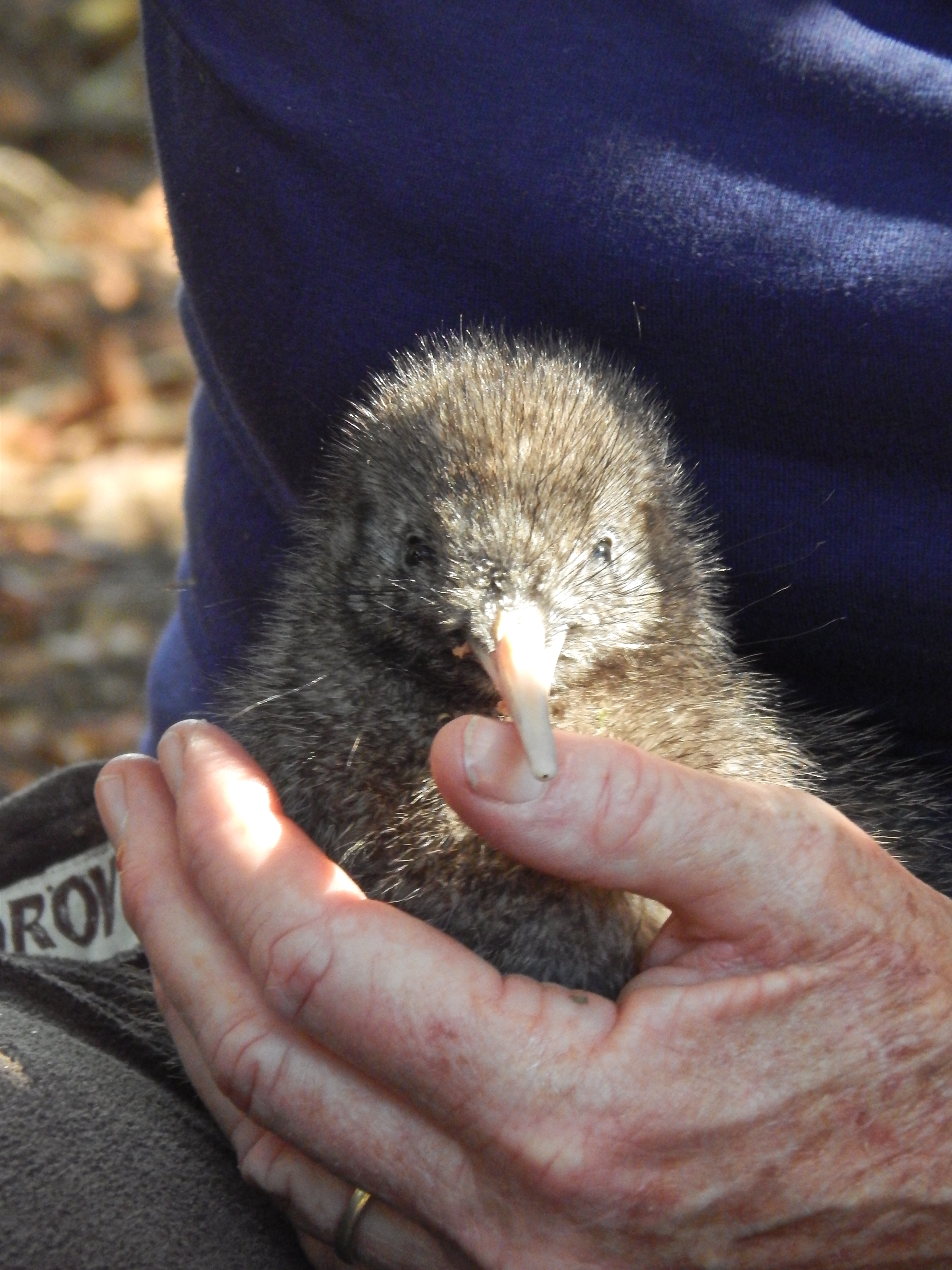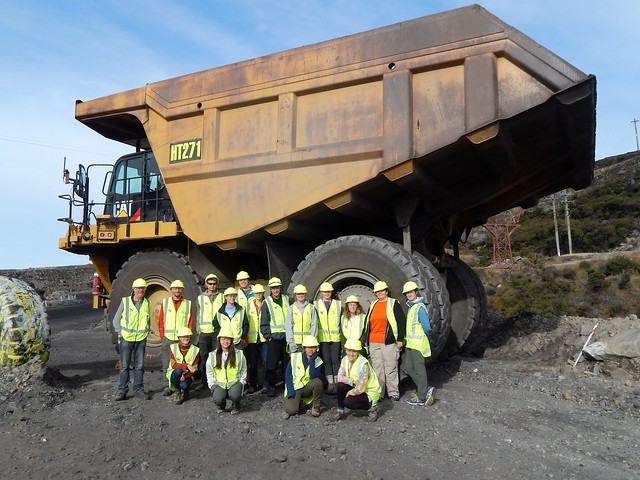 Tuesday started off as an overcast day. As we drove to the Mackenzie Basin, it became increasingly foggy. This was upsetting because we were expecting spectacular mountain views. We met a sheep farmer in the morning named Jim Morris. He discussed with us the difficulties of highland farming, including managing the land in such a way that his farming does not become exceedingly detrimental to the environment, the decrease in demand for wool, and the fact that New Zealand does not subsidies farmers to counter a drop in the market. After the talk, we continued through the basin. When we stopped along a river for lunch, the fog finally lifted, giving us our mountain view. Our next stop in the basin was at a captive breeding program for Black Stilts in Twizel. We learned that the Black Stilt is the most endangered wading bird in the world, and we saw several young adults in their constructed hides. This Stilt is endemic only to the Mackenzie Basin, and the goal of the captive breeding program is to raise the Black Stilt's population numbers to the point that they are self-sustaining in the wild. The program itself has successfully raised Stilts to young adults, but they still have a high mortality rate in the wild. Because they nest on the ground near rivers, they are highly susceptible to predation from introduced stoats and cats. The predator control that is being done is not intensive enough to allow the Black Stoats to increase their numbers or even lower the mortality rate. On the way home, we took a detour to see Mount Cook, the highest mountain in New Zealand.
Tuesday started off as an overcast day. As we drove to the Mackenzie Basin, it became increasingly foggy. This was upsetting because we were expecting spectacular mountain views. We met a sheep farmer in the morning named Jim Morris. He discussed with us the difficulties of highland farming, including managing the land in such a way that his farming does not become exceedingly detrimental to the environment, the decrease in demand for wool, and the fact that New Zealand does not subsidies farmers to counter a drop in the market. After the talk, we continued through the basin. When we stopped along a river for lunch, the fog finally lifted, giving us our mountain view. Our next stop in the basin was at a captive breeding program for Black Stilts in Twizel. We learned that the Black Stilt is the most endangered wading bird in the world, and we saw several young adults in their constructed hides. This Stilt is endemic only to the Mackenzie Basin, and the goal of the captive breeding program is to raise the Black Stilt's population numbers to the point that they are self-sustaining in the wild. The program itself has successfully raised Stilts to young adults, but they still have a high mortality rate in the wild. Because they nest on the ground near rivers, they are highly susceptible to predation from introduced stoats and cats. The predator control that is being done is not intensive enough to allow the Black Stoats to increase their numbers or even lower the mortality rate. On the way home, we took a detour to see Mount Cook, the highest mountain in New Zealand. The next day we departed Wanaka en route to Franze Josef. We traveled through the Haast Pass and stopped to hike to the Blue Pools, which is a river of pristine blue water. Our next stop was at Fox Glacier. It was an amazing view of a valley carved from the Fox Glacier, and some of our group even hiked up close to the glacier. Others were content with seeing the glacier from a far, looking instead for Kea birds or a place out of the rain. The day after we headed to Blackball. On the way, we stopped in Hari Hari to talk with Dan and Kath about the poison 1080. They told us of the negative effects of 1080 on the environment, such as accidental ingestion by native birds. Dan and Kath are currently fighting in court to prevent the spread of 1080 in the forest surrounding their home and town. Dan suggests that other methods of pest removal would be superior to poisoning. To spice up the day, we also met with the Animal Health Board, the largest user of 1080 in the world, since they are the largest users in New Zealand and New Zealand is pretty much the only country that has not banned 1080. Their goal was not to eliminate possums, but to keep New Zealand livestock free of Tuberculosis. Because possums have been known to transmit TB to cows, the Animal Health Board spreads 1080 on pellets to keep the numbers of possums low. It was interesting to hear two opposing views toward 1080, and, needless to say, we were wondering who to believe. That night we stayed at a 100 year old pub called "Formerly the Blackball Hilton."
The next day we departed Wanaka en route to Franze Josef. We traveled through the Haast Pass and stopped to hike to the Blue Pools, which is a river of pristine blue water. Our next stop was at Fox Glacier. It was an amazing view of a valley carved from the Fox Glacier, and some of our group even hiked up close to the glacier. Others were content with seeing the glacier from a far, looking instead for Kea birds or a place out of the rain. The day after we headed to Blackball. On the way, we stopped in Hari Hari to talk with Dan and Kath about the poison 1080. They told us of the negative effects of 1080 on the environment, such as accidental ingestion by native birds. Dan and Kath are currently fighting in court to prevent the spread of 1080 in the forest surrounding their home and town. Dan suggests that other methods of pest removal would be superior to poisoning. To spice up the day, we also met with the Animal Health Board, the largest user of 1080 in the world, since they are the largest users in New Zealand and New Zealand is pretty much the only country that has not banned 1080. Their goal was not to eliminate possums, but to keep New Zealand livestock free of Tuberculosis. Because possums have been known to transmit TB to cows, the Animal Health Board spreads 1080 on pellets to keep the numbers of possums low. It was interesting to hear two opposing views toward 1080, and, needless to say, we were wondering who to believe. That night we stayed at a 100 year old pub called "Formerly the Blackball Hilton." Friday started started with a tour of the historic coal mining community of Blackball. The area is famous for the 1908 miner's strike which lead to longer lunch breaks. Blackball used to have several working mines and still has one open mine today. On the way out, we stopped at a kiwi reserve to learn about the Great Spotted Kiwi. We even got to see one being fed. Driving along the west coast, we stopped at Punakaiki to see the famous pancake rocks. It is a mystery how the rocks were formed, which makes them all the more beautiful. Later that afternoon, we stopped to talk with Kerry-Jayne Wilson, the scientist in charge of the Penguin Trust. Kerry-Jayne expressed that there needs to be larger a focus on conservation for seabirds. Most conservation efforts focused on terrestrial species, but she says a number of seabird species are declining in population. A large issue is the loss of habitat since seabirds nest along the shore. The problem with this is that the shoreline is highly occupied or changed by humans. That night, we arrived at the Rough and Tumble Lodge, which is a slice of paradise in the middle of the bush. Not only did it actually have a good kitchen and laundry, but there were also tons of different activities to do. There were multiple short trails, mountain bikes, kayaks, fishing poles, and many more activities. We were all happy to spend three nights at the Lodge.
Friday started started with a tour of the historic coal mining community of Blackball. The area is famous for the 1908 miner's strike which lead to longer lunch breaks. Blackball used to have several working mines and still has one open mine today. On the way out, we stopped at a kiwi reserve to learn about the Great Spotted Kiwi. We even got to see one being fed. Driving along the west coast, we stopped at Punakaiki to see the famous pancake rocks. It is a mystery how the rocks were formed, which makes them all the more beautiful. Later that afternoon, we stopped to talk with Kerry-Jayne Wilson, the scientist in charge of the Penguin Trust. Kerry-Jayne expressed that there needs to be larger a focus on conservation for seabirds. Most conservation efforts focused on terrestrial species, but she says a number of seabird species are declining in population. A large issue is the loss of habitat since seabirds nest along the shore. The problem with this is that the shoreline is highly occupied or changed by humans. That night, we arrived at the Rough and Tumble Lodge, which is a slice of paradise in the middle of the bush. Not only did it actually have a good kitchen and laundry, but there were also tons of different activities to do. There were multiple short trails, mountain bikes, kayaks, fishing poles, and many more activities. We were all happy to spend three nights at the Lodge.Saturday we left for a tour of the Stockton Mine. None of us expected to see such huge trucks and and other vehicles. Besides being the largest open pit mine in New Zealand, Stockton practices VDT, which stands for vegetation direct transfer. This means that, before they start mining, they take away at least a meter of soil and all the vegetation on top of it. They transplant this soil elsewhere for storage until they finish mining, at which point they try to reshape the landscape to it's previous size and shape before replacing the cared for soil. In this area of mining, there are endangered carnivorous snails that they are trying to reintroduce. The snails were uprooted initially to mine the coal under their home.

Sunday was our day of rest. We didn't travel, but we stayed at the lodge and learned about eco-tourism. We also discussed the impacts of tourism on economics, environment, and society. That was also the last day of the vegan diet bet between Mattias and Emily. Thanks to their mentors, Adobi and Heather (respectively), they successfully lasted the entire week. They celebrated the night with a BBQ for Cole's birthday, though the Small-Label-Readers (Mattias's affectionate name for himself and Emily after being banned from talking about veganism) were still unable to share in the meat and cheese parts of the food.
No comments:
Post a Comment